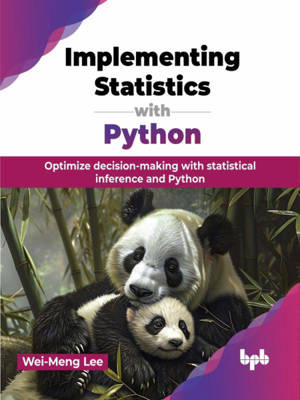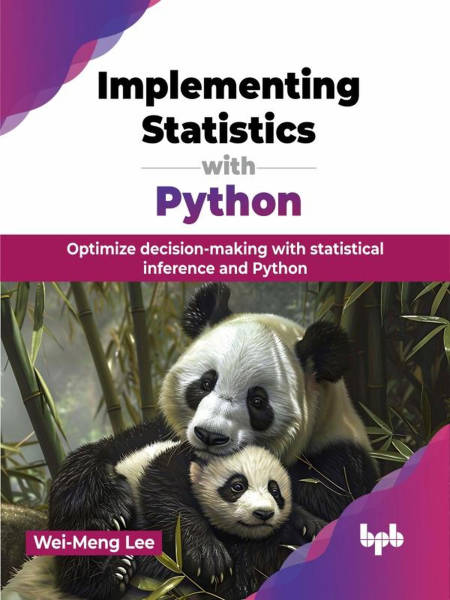
- Retrait gratuit dans votre magasin Club
- 7.000.000 titres dans notre catalogue
- Payer en toute sécurité
- Toujours un magasin près de chez vous
- Retrait gratuit dans votre magasin Club
- 7.000.0000 titres dans notre catalogue
- Payer en toute sécurité
- Toujours un magasin près de chez vous
Implementing Statistics with Python: Optimize decision-making with statistical inference and Python EBOOK
Wei-Meng LeeDescription
DESCRIPTION
Statistics is an important skill set to have when working as a quality analyst, a mathematician, a data analyst, a software engineer, or any analytical job. This book, "Implementing Statistics with Python," will teach you the basics of statistics and how to use Python to analyze data. You will learn to find patterns, quantify uncertainty, and make data-driven predictions with confidence.
You will start with basic statistics and then use Python libraries like NumPy and Pandas for data manipulation. You will also learn data visualization with Matplotlib and Seaborn to create informative charts. The book covers probability theory and statistical inference to help you make data-driven decisions. You will be exploring regression and time series analysis with ARIMA for forecasting. Finally, the book introduces ML algorithms, preparing you for real-world data science projects.
The book focuses on applying statistics rather than theory, using popular libraries like NumPy, SciPy, Pandas, Matplotlib, and Scikit-Learn. Reading this book will give you a good foundation for working with ML, business analytics, and data-driven business challenges.
KEY FEATURES
● Learn the various aspects of statistics and its applications in real-world scenarios.
● Learn about the various libraries in Python for working with data.
● Adopt the learn-by-doing approach to solve real-world statistics problems.
● Learn how statistics is applied to Machine Learning.
WHAT YOU WILL LEARN
● Learn the fundamentals of Python and its libraries like Numpy, Pandas, Matplotlib and Seaborn.
● Grasp descriptive statistics and probability concepts.
● Perform statistical inference with Chi-square, ANOVA, and regression analysis.
● Skillfully navigate multivariate and time series analysis.
● Apply statistical techniques in practical ML.
WHO THIS BOOK IS FOR
This book is for readers with basic Python knowledge who want to apply statistics in real-life scenarios, and those pursuing careers in data analytics, data engineering, data science, ML, and AI. It is also ideal for students beginning a course in statistics.
Spécifications
Parties prenantes
- Auteur(s) :
- Editeur:
Contenu
- Langue:
- Anglais
Caractéristiques
- EAN:
- 9789355517326
- Date de parution :
- 16-07-24
- Format:
- Ebook
- Protection digitale:
- Adobe DRM
- Format numérique:
- ePub

Les avis
Nous publions uniquement les avis qui respectent les conditions requises. Consultez nos conditions pour les avis.






